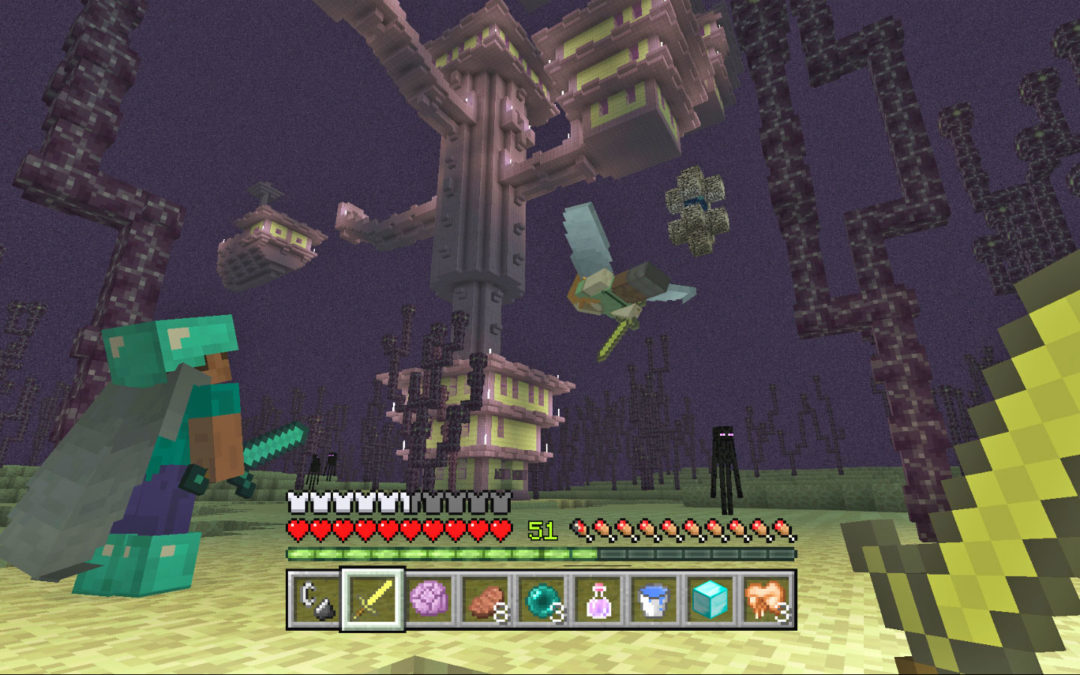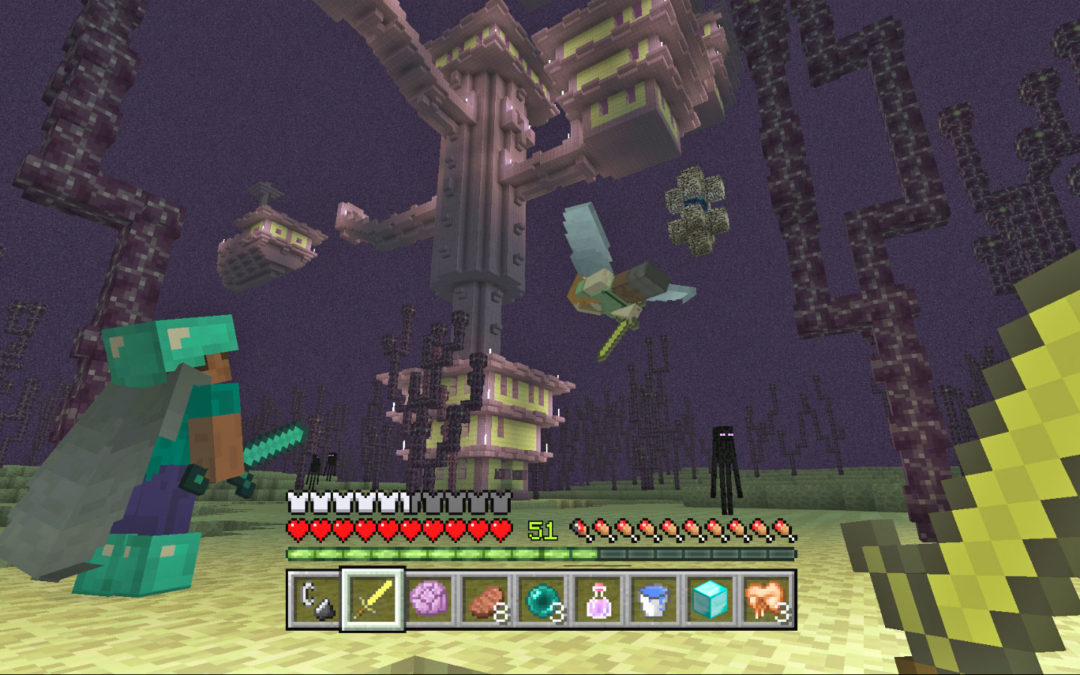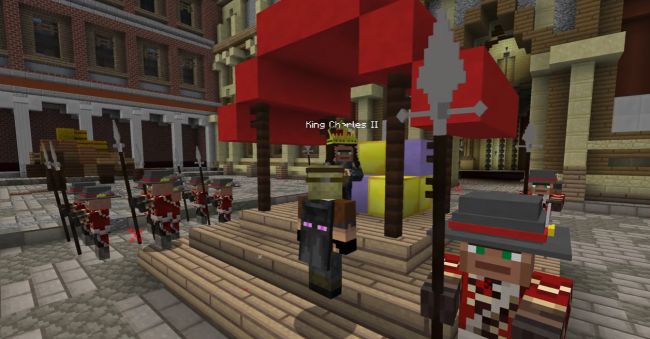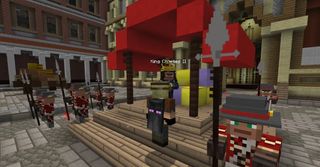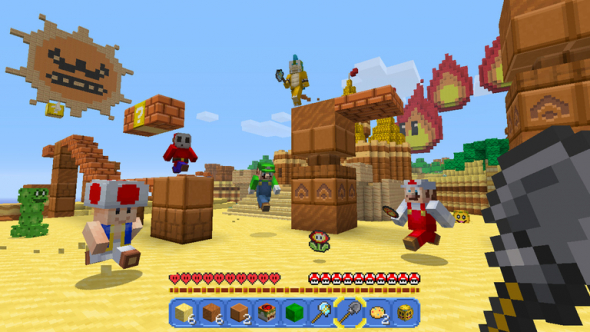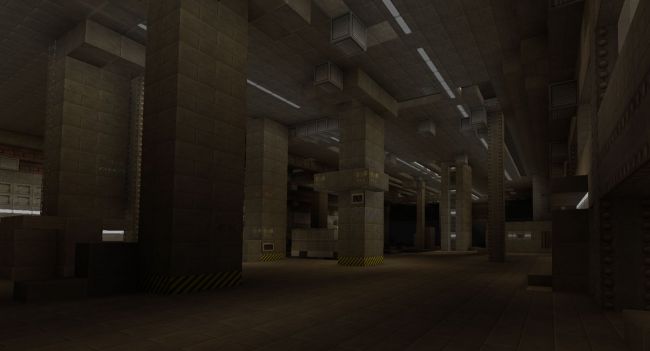If you’ve been looking to play Minecraft with your other Apple TV-owning gamer buddies, it’s time to get excited. The latest update to the Apple TV version of this hit game enables “Realms,” Minecraft‘s subscription-based multiplayer system. This upgraded version also includes Xbox Live authentication support, which will let players access their linked avatars and character skins.

Sweden’s booming video game industry is more than just Microsoft’s ‘Minecraft’
Microsoft’s acquisition of “Minecraft” maker Mojang in 2014 thrust it into the center of Sweden’s vibrant video-gaming cluster, where a boom in the last half decade — that includes much more than “Minecraft” — is one of the biggest success stories in the industry.
STOCKHOLM, SWEDEN — Microsoft raised eyebrows in 2014 with the announcement it was spending a hefty $2.5 billion to buy Mojang, the Swedish developer of world-building game “Minecraft.”
The reaction among the fast-growing video-game industry in Stockholm was a little different.
“For us, it was like, ‘Microsoft got a pretty sweet deal,’ ” said Susana Meza Graham, an executive with Swedish video game maker Paradox.
“Minecraft,” by the time Microsoft came calling, was a global phenomenon. It instantly gave Microsoft a hugely popular brand with kids and gamers of all ages, as well as the $100 million or so in profit that Mojang was then pulling in annually.
Bringing Mojang and its 35 employees under Microsoft’s umbrella also thrust the Redmond company into the center of a vibrant, and unique, video-gaming cluster.
Sweden’s video-game boom in the last half decade is one of the biggest success stories in the industry, fueled by a talented and creative workforce and the fruits of years of government support for education and technology.
The country today boasts the second-highest concentration of video-game studios per capita in the world (neighboring Finland is No. 1), according to data from industry tracker Gamedevmap. The U.S. clocks in at 13th, with less than half the rate of game companies per capita as Sweden.
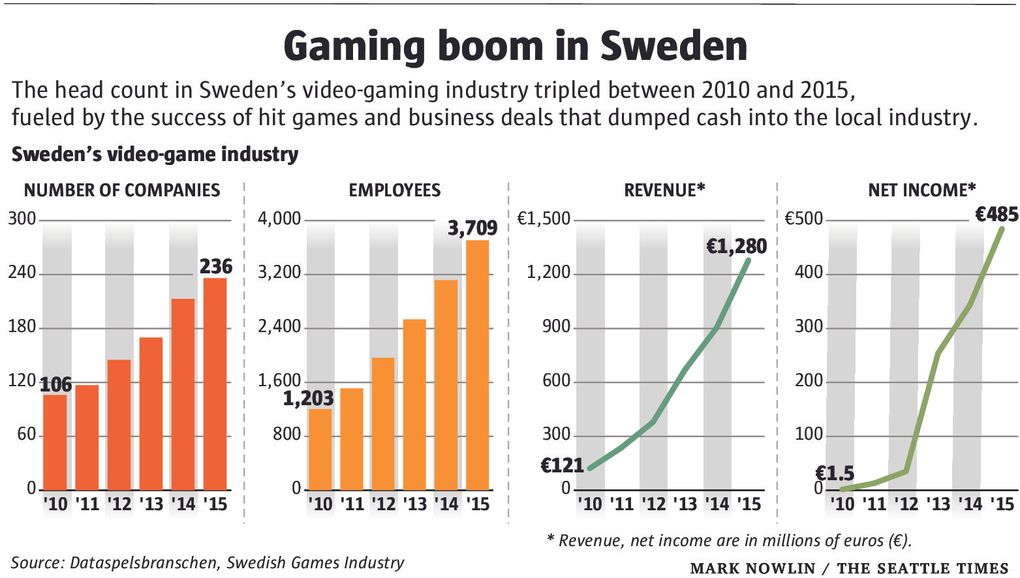
And an industry trade group estimates that one out of every 10 people in the world has played a game developed in Sweden, from casual titles (“Candy Crush”) to the high-end (“Battlefield”) and whimsical (“Goat Simulator”).
Recently, many have plugged into “Minecraft,” an open-ended game that lets players pilot blocky characters and build elaborate universes. The game has sold more than 122 million copies, the second-biggest all-time seller behind No. 1 “Tetris.”
Converted factories
Stockholm, Sweden’s largest city and home to 930,000 people, is spread across an archipelago of 14 islands and coastline where Lake Mälaren meets the Baltic Sea.
At the core is the kidney-shaped island of Gamla Stan, “old town” in English, a maze of narrow cobbled streets connected by bridges and ferries to the adjacent islands.
Just to the south sits Södermalm, an island primarily used for farmland until its bogs and lakes were drained and working class housing was built in the 19th century. Today, it is Stockholm’s cultural capital, and the heart of its gaming scene.
One recent Friday, Meza Graham and most of Paradox’s 220 employees gathered on the sixth floor of their Södermalm headquarters to toast — Prosecco in hand — the simultaneous release of two updates to their games.
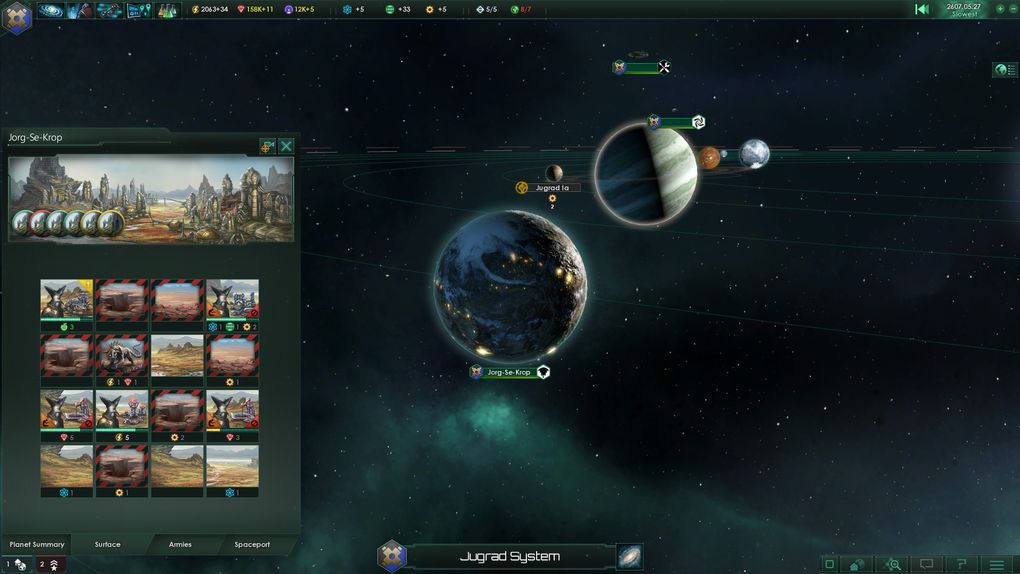
Avalanche, another development studio, occupies two floors of the same building. Dice, the biggest employer in Sweden’s gaming industry, is headquartered across the street.
“This would have to be the most populated game-development area in the world,” says Jacob Kroon, a spokesman with the Swedish Games Industry trade group.
A few blocks away down a street of utilitarian-looking apartment buildings and brick-walled former factories converted into offices is a subsidiary of Rovio, the Finnish-headquartered “Angry Birds” builder.
And around the corner from there, on the first floor of an old tobacco factory, is Mojang.
Mojang’s trajectory
The company was founded in 2009 by Markus “Notch” Persson, who built “Minecraft” in his spare time.
Early on, he spurned a job offer from game publisher Valve, which wanted him to bring his game idea to the Bellevue company.
After the sale to Microsoft closed, Persson and Mojang’s two other founders left the company.
Microsoft’s purchase of one of Sweden’s crown jewels of video gaming sparked the concerns that typically come when a big company acquires a smaller one.
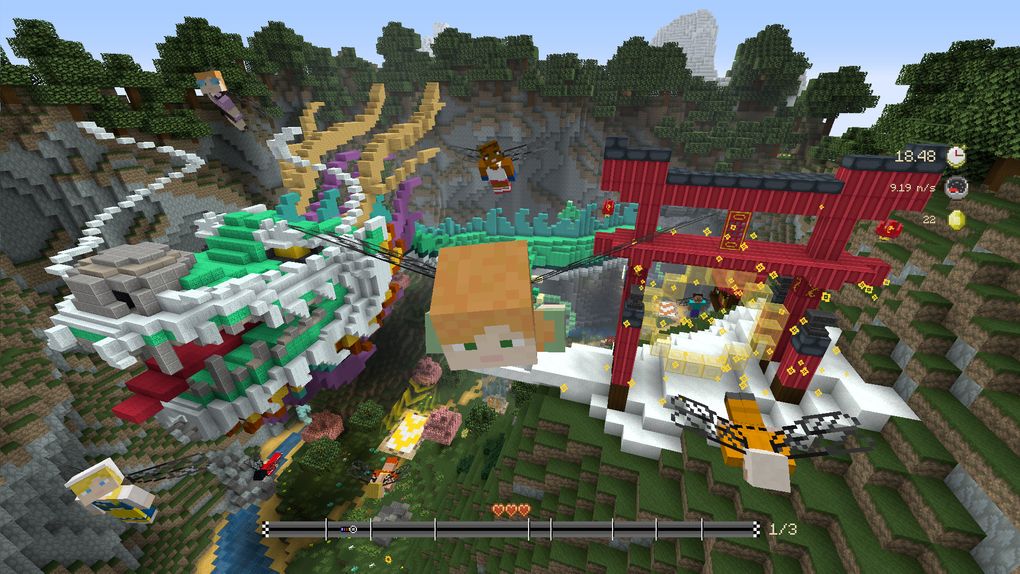
New oversight and an infusion of foreign corporate culture can end what made the acquired company successful in the first place, particularly in the creative and personality-driven video-gaming industry.
There were “a lot of worries” among employees at Mojang, said Jonas Mårtensson, who joined the company the year before the deal and would stay on afterward as CEO. “What would Microsoft do? Who would we work with?”
But executives and developers in Stockholm say they haven’t seen much change in direction from Mojang in the 2½ years Microsoft has owned the studio, which now employs more than 50 people here.
From outward appearances at Mojang today, there’s little to suggest the company even belongs to Microsoft.
Much of the change has been in Redmond, where Microsoft has set up a studio to pilot some editions of “Minecraft,” and used the game prominently in marketing materials, including for the HoloLens, Xbox and the company’s education initiatives.
Bigger picture, “Microsoft hasn’t really shown yet what they want to do,” said Patric Palm, chief executive of Hansoft, a Sweden-based game and software development tool maker. “And since they paid such a hefty price, they obviously have a bigger game in mind here.”
Positive acquisitions
Some Swedish game studios have flourished under new management.
Dice, creator of the “Battlefield” series, was scooped up in 2006 by Electronic Arts (EA), the California-based company with a reputation for pulling the plug on studios it acquired.
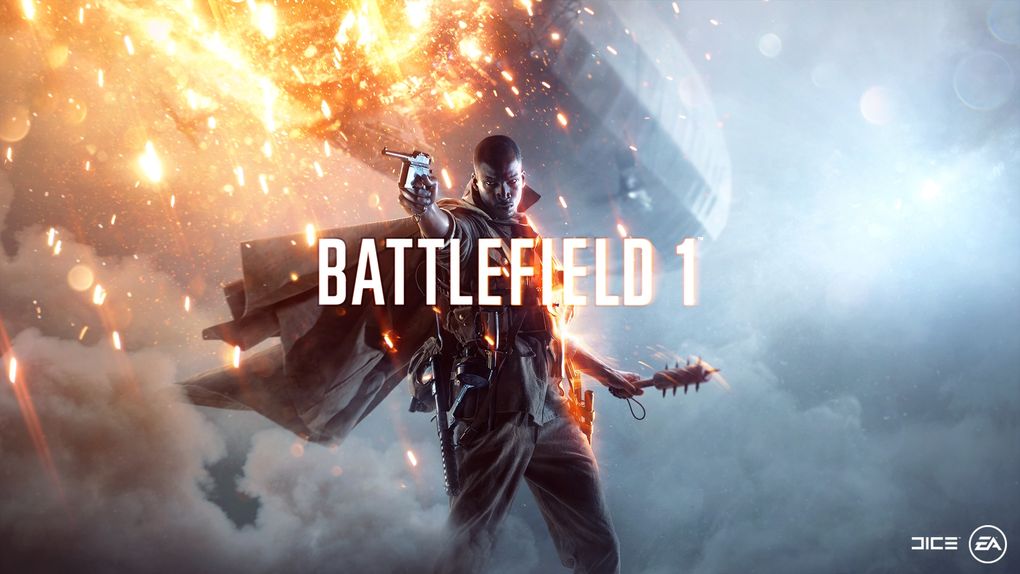
Instead of withering, Dice has thrived. It employs more than 550 people in Sweden, including the team behind the hit “Battlefield 1.” Dice’s CEO at the time of the sale, Patrick Söderlund, now runs EA’s worldwide network of studios.
Another Swedish gaming company, Massive, has kept producing hits in nearly a decade as a subsidiary of French gaming giant Ubisoft.
“If anything, (international acquisitions) have only been positive” for the local industry, said Oskar Burman, an industry veteran who has led Stockholm studios owned by EA and Rovio, among others.
Like many of Sweden’s video-game pioneers, Burman got his start in the “demo” scene, tinkering with game making on early personal computers built by the likes of Atari and Commodore.
“Back in the 90s, it was really hard,” he says. “It was not seen as a proper path by anyone. We struggled (for legitimacy) with the government, our parents, everyone.”
They did, however, have advantages that would come into play as video gaming grew from hobby to a multibillion-dollar entertainment industry.
Swedish stimulus
Sweden made English-language education compulsory for all children in the 1960s, seeding a population fluent in what would become the default language of the internet and computer science.
Government investments in the information age paid dividends, too, from subsidies to buy home computers in the 1990s, to a state-funded broadband internet build out in the 2000s.
Peter Zetterberg, a Swedish video-gaming pioneer who helped pilot Microsoft’s Mojang acquisition, said the country’s cultural scene has also benefitted from a patient parenting attitude. Kids, he says, are often given the freedom to learn through play, rather than pressured into traditional career paths.
“To the frustration of my parents, we had a computer, and I sat in front of it a lot,” he said. “We fiddle with things, we tinker, and eventually, we might find the thing we want to do.”
Meanwhile, the country’s small domestic market forces companies to look to the global market — and particularly the U.S.
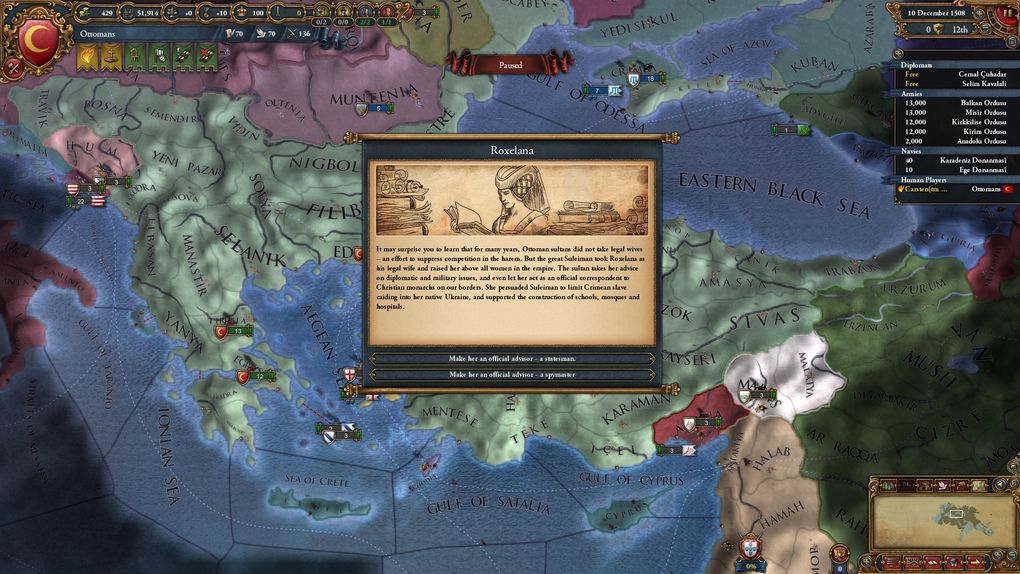
Meza Graham, a former consumer-goods marketer and Paradox’s 12th employee, was hired in 2004 to help build the company’s international presence and publishing studio. Paradox’s games — mostly deep, historical, world-spanning strategy simulations — were written in English. So were its website and user forums.
“At first, everyone assumed we were American,” she said. The company didn’t go out of its way to correct that impression.
Meza Graham also tried to inject a bit of American-style confidence into the company’s correspondence, a contrast to a Swedish tendency for humility and deference. Simple things, she said, like “if we think we’ve made a good game, say that in the news release.”
Paradox would go on to make its share of hits, and went public last year, listing shares on the Nasdaq First North exchange in Stockholm.
Growth spurt
The industry’s biggest growth has occurred in the last few years, a boom partly fueled by digital downloads of games that meant startups like Mojang didn’t need to work with a publishing-house gatekeeper.
Between 2010 and 2015, the most recent figures available, employment at Swedish game companies more than tripled, to 3,700 people, according to the Swedish Games Industry group. Sales surged from the equivalent of $132 million to $1.4 billion.
Mojang has contributed much of that revenue growth, and its sales have continued to climb under Microsoft. Revenue attributed to the Mojang subsidiary during Microsoft’s fiscal year ended in June was up 84 percent from the company’s last full year of independent ownership, to $443 million.
Tommy Palm, chief executive of Stockholm-based Resolution Games, said Microsoft could prove to be a good home for Mojang. “I think Microsoft certainly has the long-term vision,” he said. “Minecraft is a super interesting product, there are so many things you can do with it.”
For Sweden, Microsoft’s cash also minted another set of wealthy game-industry veterans who might wind up looking for second acts.
Palm and Burman are both repeat entrepreneurs, using some of the cash from previous deals to test new ideas. Many here are also waiting to see what Mojang’s departed founders do next.
“You need heroes,” said Mårtensson, the current Mojang CEO. “And we’ve had a few success stories. That inspires people.”
Sweden’s booming video game industry is more than just Microsoft’s ‘Minecraft’
